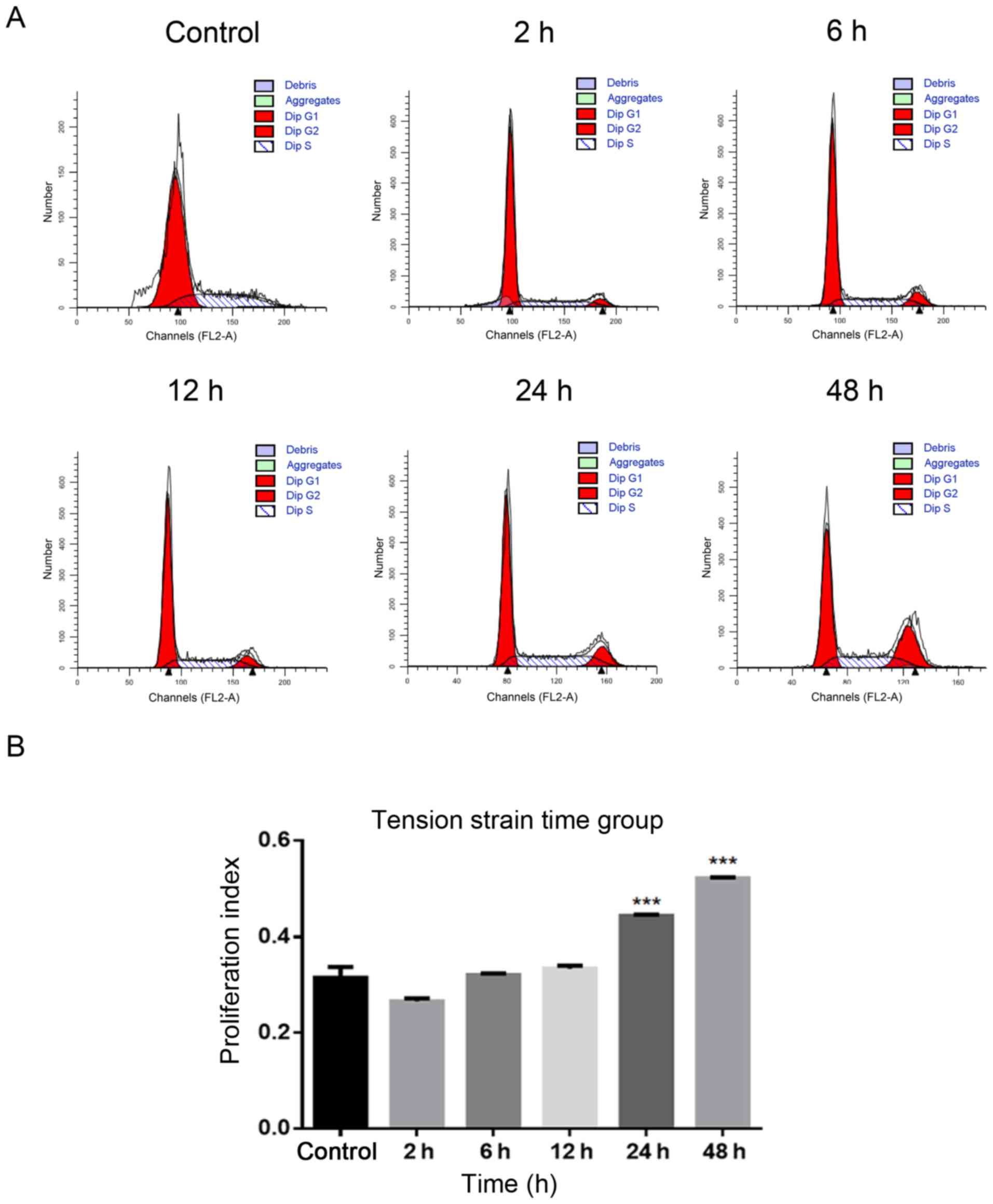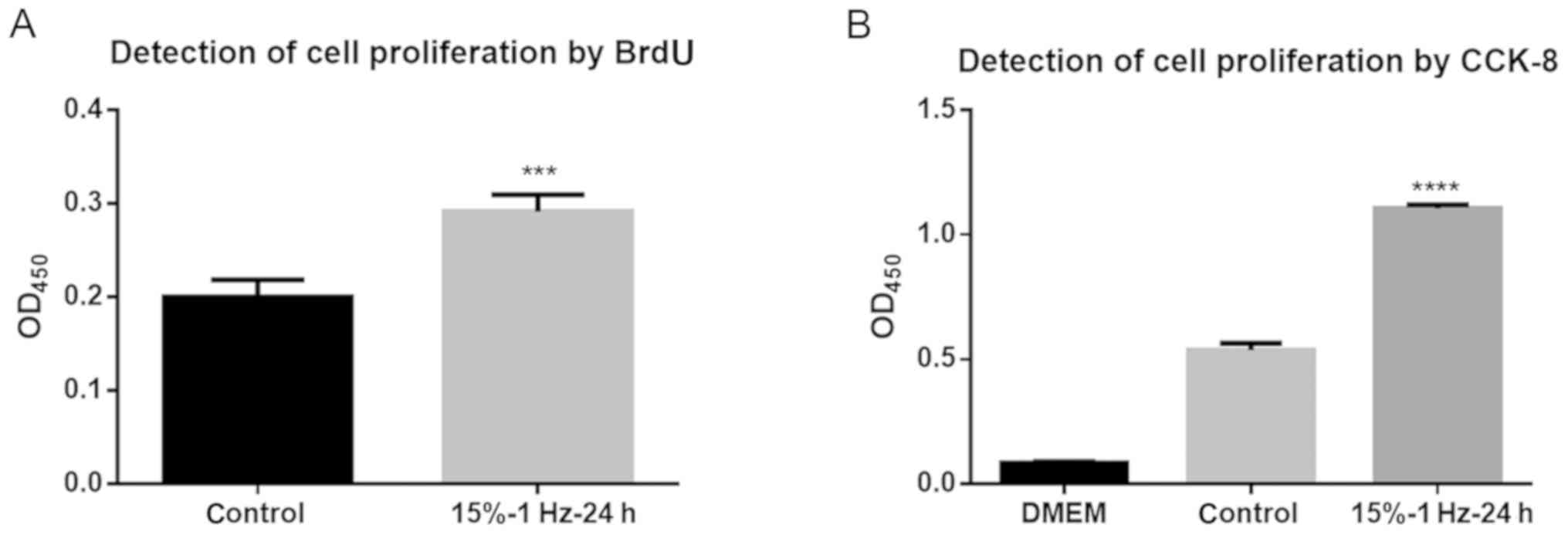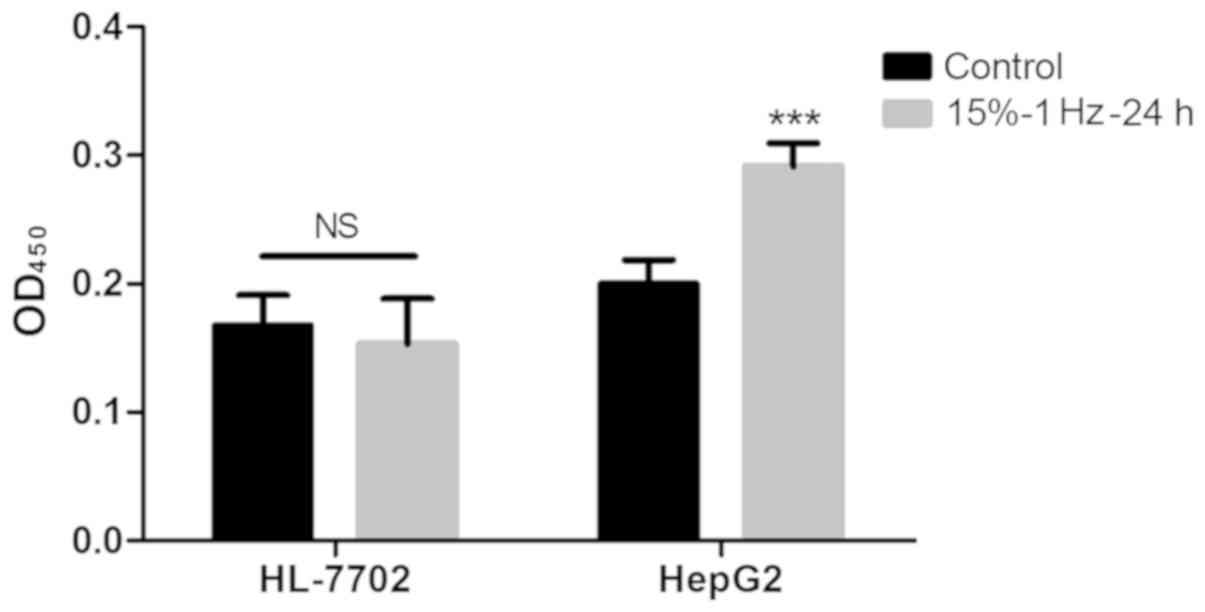|
1
|
Masuzaki R, Tateishi R, Yoshida H, Goto E,
Sato T, Ohki T, Imamura J, Goto T, Kanai F, Kato N, et al:
Prospective risk assessment for liver cancer development in
patients with chronic hepatitis C by transient elastography.
Hepatology. 49:1954–1961. 2009. View Article : Google Scholar : PubMed/NCBI
|
|
2
|
Fattovich G, Stroffolini T, Zagni I and
Donato F: Hepatocellular carcinoma in cirrhosis: Incidence and risk
factors. Gastroenterology. 127 (Suppl 1):S35–S50. 2004. View Article : Google Scholar : PubMed/NCBI
|
|
3
|
Osada S, Kanematsu M, Imai H, Goshima S
and Sugiyama Y: Hepatic fibrosis influences the growth of liver
cancer. Hepatogastroenterology. 55:184–187. 2008.PubMed/NCBI
|
|
4
|
Kornek M, Raskopf E, Tolba R, Becker U,
Klöckner M, Sauerbruch T and Schmitz V: Accelerated orthotopic
liver cancers growth is linked to increased expression of
pro-angiogenic and prometastatic factors in murine liver fibrosis.
Liver Int. 28:509–518. 2008. View Article : Google Scholar : PubMed/NCBI
|
|
5
|
Qi F, Hu JF, Liu BH, Wu CQ, Yu HY, Yao DK
and Zhu L: miR-9a-5p regulates proliferation and migration of
hepatic stellate cells under pressure through inhibition of Sirt1.
World J Gastroenterol. 21:9900–9915. 2015. View Article : Google Scholar : PubMed/NCBI
|
|
6
|
Yi S, Qin X, Luo X, Zhang Y, Liu Z and Zhu
L: Identification of miRNAs associated with the mechanical response
of hepatic stellate cells by miRNA microarray analysis. Exp Ther
Med. 16:1707–1714. 2018.PubMed/NCBI
|
|
7
|
Shen S, Luo X, Gao K, Sun Y, Yao D and Zhu
L: Identification and integrative analysis of microRNAs and mRNAs
involved in proliferation and invasion of pressure treated human
liver cancer cell lines. Mol Med Rep. 20:375–387. 2019.PubMed/NCBI
|
|
8
|
Sakata R, Ueno T, Nakamura T, Ueno H and
Sata M: Mechanical stretch induces TGF-beta synthesis in hepatic
stellate cells. Eur J Clin Invest. 34:129–136. 2004. View Article : Google Scholar : PubMed/NCBI
|
|
9
|
Goto T, Mikami KI, Miura K, Ohshima S,
Yoneyama K, Nakane K, Watanabe D, Otaka M and Watanabe S:
Mechanical stretch induces matrix metalloproteinase 1 production in
human hepatic stellate cells. Pathophysiology. 11:153–158. 2004.
View Article : Google Scholar : PubMed/NCBI
|
|
10
|
Kozomara A, Birgaoanu M and
Griffiths-Jones S: miRBase: From microRNA sequences to function.
Nucleic Acids Res. 47(D1): D155–D162. 2019. View Article : Google Scholar : PubMed/NCBI
|
|
11
|
Chen Y, Mohammed A, Oubaidin M, Evans CA,
Zhou X, Luan X, Diekwisch TG and Atsawasuwan P: Cyclic stretch and
compression forces alter microRNA-29 expression of human
periodontal ligament cells. Gene. 566:13–17. 2015. View Article : Google Scholar : PubMed/NCBI
|
|
12
|
Parpart S, Roessler S, Dong F, Rao V,
Takai A, Ji J, Qin LX, Ye QH, Jia HL, Tang ZY, et al: Modulation of
miR-29 expression by α-fetoprotein is linked to the liver cancer
epigenome. Hepatology. 60:872–883. 2014. View Article : Google Scholar : PubMed/NCBI
|
|
13
|
Ladeiro Y, Couchy G, Balabaud C,
Bioulac-Sage P, Pelletier L, Rebouissou S and Zucman-Rossi J:
MicroRNA profiling in hepatocellular tumors is associated with
clinical features and oncogene/tumor suppressor gene mutations.
Hepatology. 47:1955–1963. 2008. View Article : Google Scholar : PubMed/NCBI
|
|
14
|
Vanderploeg EJ, Imler SM, Brodkin KR,
García AJ and Levenston ME: Oscillatory tension differentially
modulates matrix metabolism and cytoskeletal organization in
chondrocytes and fibrochondrocytes. J Biomech. 37:1941–1952. 2004.
View Article : Google Scholar : PubMed/NCBI
|
|
15
|
Davies D and Allen P: DNA Analysis by Flow
Cytometry. Flow Cytometry. Macey MG: Humana Press; pp. 165–179.
2007, View Article : Google Scholar
|
|
16
|
Livak KJ and Schmittgen TD: Analysis of
relative gene expression data using real-time quantitative PCR and
the 2-ΔΔCT method. Methods. 25:402–408. 2001. View Article : Google Scholar : PubMed/NCBI
|
|
17
|
Lewis BP, Shih IH, Jones-Rhoades MW,
Bartel DP and Burge CB: Prediction of mammalian microRNA targets.
Cell. 115:787–798. 2003. View Article : Google Scholar : PubMed/NCBI
|
|
18
|
Huang W, Sherman BT and Lempicki RA:
Bioinformatics enrichment tools: Paths toward the comprehensive
functional analysis of large gene lists. Nucleic Acids Res.
37:1–13. 2009. View Article : Google Scholar : PubMed/NCBI
|
|
19
|
Yi M, Horton JD, Cohen JC, Hobbs HH and
Stephens RM: WholePathwayScope: A comprehensive pathway-based
analysis tool for high-throughput data. BMC Bioinformatics.
7:302006. View Article : Google Scholar : PubMed/NCBI
|
|
20
|
Kanehisa M, Goto S, Kawashima S, Okuno Y
and Hattori M: The KEGG resource for deciphering the genome.
Nucleic Acids Res. 32:D277–D280. 2004. View Article : Google Scholar : PubMed/NCBI
|
|
21
|
Benjamini Y and Hochberg Y: Controlling
the false discovery rate: A practical and powerful approach to
multiple testing. J R Stat Soc B. 57:289–300. 1995.
|
|
22
|
Yan Z, Su G, Gao W, He J, Shen Y, Zeng Y
and Liu X: Fluid shear stress induces cell migration and invasion
via activating autophagy in HepG2 cells. Cell Adhes Migr.
13:152–163. 2019. View Article : Google Scholar
|
|
23
|
Wang X, Zhang Y, Feng T, Su G, He J, Gao
W, Shen Y and Liu X: Fluid Shear Stress Promotes Autophagy in
Hepatocellular Carcinoma Cells. Int J Biol Sci. 14:1277–1290. 2018.
View Article : Google Scholar : PubMed/NCBI
|
|
24
|
de Waard V, Arkenbout EK, Vos M, Mocking
AI, Niessen HW, Stooker W, de Mol BA, Quax PH, Bakker EN, VanBavel
E, et al: TR3 nuclear orphan receptor prevents cyclic
stretch-induced proliferation of venous smooth muscle cells. Am J
Pathol. 168:2027–2035. 2006. View Article : Google Scholar : PubMed/NCBI
|
|
25
|
Weyts FA, Bosmans B, Niesing R, van
Leeuwen JP and Weinans H: Mechanical control of human osteoblast
apoptosis and proliferation in relation to differentiation. Calcif
Tissue Int. 72:505–512. 2003. View Article : Google Scholar : PubMed/NCBI
|
|
26
|
Nishimura K, Blume P, Ohgi S and Sumpio
BE: The effect of different frequencies of stretch on human dermal
keratinocyte proliferation and survival. J Surg Res. 155:125–131.
2009. View Article : Google Scholar : PubMed/NCBI
|
|
27
|
Hong L, Han Y, Zhang H, Li M, Gong T, Sun
L, Wu K, Zhao Q and Fan D: The prognostic and chemotherapeutic
value of miR-296 in esophageal squamous cell carcinoma. Ann Surg.
251:1056–1063. 2010. View Article : Google Scholar : PubMed/NCBI
|
|
28
|
Maia D, de Carvalho AC, Horst MA, Carvalho
AL, Scapulatempo-Neto C and Vettore AL: Expression of miR-296-5p as
predictive marker for radiotherapy resistance in early-stage
laryngeal carcinoma. J Transl Med. 13:2622015. View Article : Google Scholar : PubMed/NCBI
|
|
29
|
Vaira V, Faversani A, Dohi T, Montorsi M,
Augello C, Gatti S, Coggi G, Altieri DC and Bosari S: miR-296
regulation of a cell polarity-cell plasticity module controls tumor
progression. Oncogene. 31:27–38. 2012. View Article : Google Scholar : PubMed/NCBI
|
|
30
|
Yoon AR, Gao R, Kaul Z, Choi IK, Ryu J,
Noble JR, Kato Y, Saito S, Hirano T, Ishii T, et al: MicroRNA-296
is enriched in cancer cells and downregulates p21WAF1 mRNA
expression via interaction with its 3′ untranslated region. Nucleic
Acids Res. 39:8078–8091. 2011. View Article : Google Scholar : PubMed/NCBI
|
|
31
|
Migita K, Komori A, Kozuru H, Jiuchi Y,
Nakamura M, Yasunami M, Furukawa H, Abiru S, Yamasaki K, Nagaoka S,
et al: Circulating microRNA Profiles in Patients with Type-1
Autoimmune Hepatitis. PLoS One. 10:e01369082015. View Article : Google Scholar : PubMed/NCBI
|
|
32
|
Polioudakis D, Abell NS and Iyer VR:
miR-503 represses human cell proliferation and directly targets the
oncogene DDHD2 by non-canonical target pairing. BMC Genomics.
16:402015. View Article : Google Scholar : PubMed/NCBI
|
|
33
|
Jima DD, Zhang J, Jacobs C, Richards KL,
Dunphy CH, Choi WW, Au WY, Srivastava G, Czader MB, Rizzieri DA, et
al Hematologic Malignancies Research Consortium, : Deep sequencing
of the small RNA transcriptome of normal and malignant human B
cells identifies hundreds of novel microRNAs. Blood. 116:e118–e127.
2010. View Article : Google Scholar : PubMed/NCBI
|
|
34
|
Park GB and Kim D: MicroRNA-503-5p
Inhibits the CD97-Mediated JAK2/STAT3 Pathway in Metastatic or
Paclitaxel-Resistant Ovarian Cancer Cells. Neoplasia. 21:206–215.
2019. View Article : Google Scholar : PubMed/NCBI
|
|
35
|
Jiang SP and Li ZR: miR-503-5p regulates
cell epithelial-to-mesenchymal transition, metastasis and prognosis
of liver cancer through inhibiting WEE1. Eur Rev Med Pharmacol Sci.
23:2028–2037. 2019.PubMed/NCBI
|
|
36
|
Li X, Han X, Yang J, Sun J and Wei P:
miR-503-5p inhibits the proliferation of T24 and EJ bladder cancer
cells by interfering with the Rb/E2F signaling pathway. Xi Bao Yu
Fen Zi Mian Yi Xue Za Zhi. 33:1360–1364. 2017.(In Chinese).
PubMed/NCBI
|
|
37
|
Dowdy SC, Mariani A, Reinholz MM, Keeney
GL, Spelsberg TC, Podratz KC and Janknecht R: Overexpression of the
TGF-beta antagonist Smad7 in endometrial cancer. Gynecol Oncol.
96:368–373. 2005. View Article : Google Scholar : PubMed/NCBI
|
|
38
|
Kleeff J, Ishiwata T, Maruyama H, Friess
H, Truong P, Büchler MW, Falb D and Korc M: The TGF-beta signaling
inhibitor Smad7 enhances tumorigenicity in pancreatic cancer.
Oncogene. 18:5363–5372. 1999. View Article : Google Scholar : PubMed/NCBI
|
|
39
|
Broderick P, Carvajal-Carmona L, Pittman
AM, Webb E, Howarth K, Rowan A, Lubbe S, Spain S, Sullivan K,
Fielding S, et al CORGI Consortium, : A genome-wide association
study shows that common alleles of SMAD7 influence colorectal
cancer risk. Nat Genet. 39:1315–1317. 2007. View Article : Google Scholar : PubMed/NCBI
|
|
40
|
Zhuang LK, Yang YT, Ma X, Han B, Wang ZS,
Zhao QY, Wu LQ and Qu ZQ: MicroRNA-92b promotes liver cancer
progression by targeting Smad7 and is mediated by long non-coding
RNA XIST. Cell Death Dis. 7:e22032016. View Article : Google Scholar : PubMed/NCBI
|
|
41
|
Li Y, Guo D, Ren M, Zhao Y, Wang X, Chen
Y, Liu Y, Lu G and He S: Long non-coding RNA SNAI3-AS1 promotes the
proliferation and metastasis of liver cancer by regulating the
UPF1/Smad7 signalling pathway. J Cell Mol Med. 2019.
|
|
42
|
Mani S, Wang C, Wu K, Francis R and
Pestell R: Cyclin-dependent kinase inhibitors: Novel anticancer
agents. Expert Opin Investig Drugs. 9:1849–1870. 2000. View Article : Google Scholar : PubMed/NCBI
|
|
43
|
Fang JY and Richardson BC: The MAPK
signalling pathways and colorectal cancer. Lancet Oncol. 6:322–327.
2005. View Article : Google Scholar : PubMed/NCBI
|
|
44
|
Kim EK and Choi EJ: Pathological roles of
MAPK signaling pathways in human diseases. Biochim Biophys Acta.
1802:396–405. 2010. View Article : Google Scholar : PubMed/NCBI
|
|
45
|
Ling MT, Wang X, Ouyang XS, Lee TK, Fan
TY, Xu K, Tsao SW and Wong YC: Activation of MAPK signaling pathway
is essential for Id-1 induced serum independent prostate cancer
cell growth. Oncogene. 21:8498–8505. 2002. View Article : Google Scholar : PubMed/NCBI
|
|
46
|
Fresno Vara JA, Casado E, de Castro J,
Cejas P, Belda-Iniesta C and González-Barón M: PI3K/Akt signalling
pathway and cancer. Cancer Treat Rev. 30:193–204. 2004. View Article : Google Scholar : PubMed/NCBI
|
















